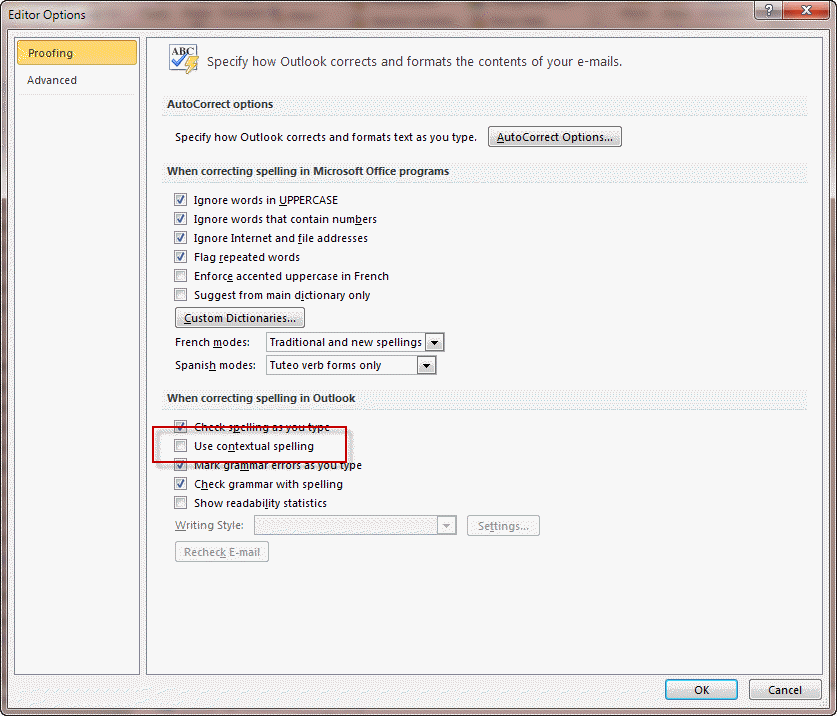Over time, your Mac probably accumulates a lot of cruft. Old applications you no longer use, data you have no use for, a desktop full of icons (only four of which you actually ever use)…you know what I mean. With so many people working from home lately, the problem has only gotten worse.

As Outlook updates are installed this week I'm seeing a lot of questions that go something like this: Overnight, Outlook changed dramatically. There is way too much white space between the messages in my inbox and the To/CC and subject area in new messages is huge. I'm on a Mac with Outlook 365, that Styles option isn't there. What I did find was that right-clicking when in the body of the mail and then clicking on Paragraph (or using Command+Option+M) opens a similar window to the one you displayed when editing normal style. I'm not sure though if it is broken or simply doesn't work on the Mac version. In Outlook 2003, 2007 and 2010, the Junk Mail filter runs before Outlook rules. In practice, this means that your Outlook rules won't be applied to messages moved to the Junk folder. Beginning with Outlook 2010, the Junk Email filter setting are applied to each e-mail account individually. Question: Q: Folder contains excess whitespace (failure), on Outlook for MAC More Less Apple Footer This site contains user submitted content, comments and opinions and is for informational purposes only.
Question: Q: Folder contains excess whitespace (failure) 1025 Hi, In outlook for mac (version 16.35) I created a new folder with one blank spot at the end of the name.
Now is as good a time as any to tidy up your Mac, freeing up storage space and probably CPU cycles and RAM in the process. Here are a few tips to make quick work of your Mac “spring cleaning.”
Optimize Storage
Open the Storage Management app, either by using Spotlight (Command-space) or by clicking the Apple logo in the upper left of the menu bar, choosing About This Mac, clicking the Storage tab, then Manage.
In the Recommendations tab you’ll see a number of useful options, like Store in iCloud and Empty Trash Automatically. The Optimize Storage solution will get rid of things like old TV shows you’ve already watched and old email attachments when you’re low on storage space.
Take a look at your Applications and Documents
While you’re in the Storage Management app, click on the Applications tab in the left column. You can see all your installed applications here and sort them by size, easily deleting apps you haven’t used in ages.

Then, click on Documents in the left tab. There are several sections here, like Large Files and Unsupported Apps, that are worth perusing. Big library files (for apps like Lightroom or Final Cut Pro) are likely to show up here, and you might not want to mess with them. But you may have old large files and documents, or apps that no longer even work on your version of macOS, that you can safely remove.
Get your desktop under control
Outlook For Mac 2011 Folder Contains Excess Whitespace Failure
If your desktop is littered with icons, you should probably tidy things up a bit. Right-click (two-finger tap on a trackpad) any open space and choose Clean Up to get things arranged neatly, or Clean Up By to sort them as well. Consider the Use Stacks feature to automatically stack-up files of the same type into a single icon. Just click on that icon to open the stack. This can really tidy up your desktop!

Try DaisyDisk
Outlook For Mac 2011 Folder Contains Excess Whitespace
Power users that really want to clean out their Mac’s storage may want to check out a third party app like DaisyDisk ($9.99). It’s a simple and clear way to see everything on your Mac, or any other attached storage device or drive. It can do things like dig into the mysterious “Other” category and help you clear out what you don’t need.
Outlook For Mac 2011 Folder Contains Excess Whitespace Failure Throttled
It may seem unnecessary to pay money for an app that just helps you delete stuff from your Mac’s storage, but there’s a lot of value in disk analyzers like this. It can really be eye-opening to see exactly what’s filling up your Mac’s SSD.
Note: When you purchase something after clicking links in our articles, we may earn a small commission. Read ouraffiliate link policyfor more details.
- Related: